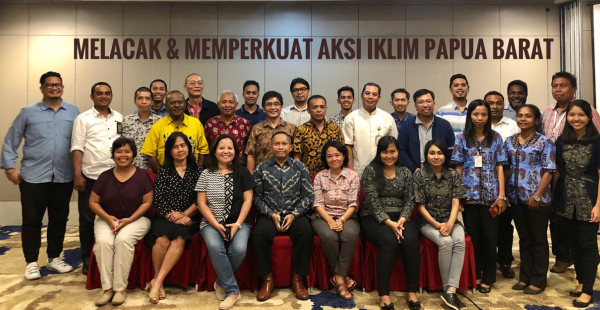
Key action for advancing low-carbon development growth in West Papua Province
Forests cover 90 per cent of West Papua Province. While there is growing demand for socio-economic development, West Papua needs sustainable management if Indonesia is to meet its emissions reduction target. The TASCA programme strives to mainstream the low-carbon development framework to strike a balance between socio-economics and the Environment.
With forest cover of 90 per cent, West Papua Province holds great potential for contributing to Indonesia’s efforts to reduce greenhouse gas emissions. Despite its abundant natural resources, in 2018, West Papua was listed as the province with the second highest poverty rate in Indonesia; a rate that had increased by 23% among the total population compared to the previous year (BPS, 2018). The extensive rainforest area and rich biodiversity provide opportunities to reduce the poverty rate by providing jobs in Papua. However, in the current development scenario, the province is allowed to clear 20% of its forest cover, which accounts for more than 1.9 million hectares. This could potentially release 0.6-1.2 GtCO2 into the atmosphere, meaning Indonesia would likely be unable to meet the NDC target of reducing emissions by 29-41 per cent by 2030 (WRI Indonesia, 2019).
Through its Tracking and Strengthening Climate Action programme (TASCA), WRI Indonesia seeks to support the West Papua provincial government in tracking climate action and understanding its potential contribution in fulfilling national climate commitments. In the process, WRI Indonesia is working closely with local counterparts at the Center of Environmental Research, Universitas Papua (PPLH UNIPA). The key activities conducted in West Papua are:
- Co-developing knowledge products with researchers from PPLH UNIPA to analyse West Papua’s contribution to fulfilling climate commitments and national development for stronger narratives on low-carbon development (LCD) in West Papua Province. As West Papua has signed the Memorandum of Understanding of LCD Indonesia, the challenge of translating the commitment into concrete action on the ground remains. The analysis is expected to identify the most effective policy to ensure high-carbon activities are short-lived.
- Providing a series of training sessions on system dynamic models, prioritising the balance between social welfare, economic growth and natural preservation. Launching the LCD translation process in pilot provinces including West Papua, capacity building on dynamic modelling is expected to empower local stakeholders to set long-term sustainable development in motion in West Papua Province.
To this end and to help mainstream LCD in West Papua, TASCA activities are continuing to assist local stakeholders in collaborating to formulate green growth planning. To date, we have organised the first workshop on system dynamic modelling. The speaker is a climate scientist and dynamic trainer from the Climate Change Adaptation and Resilience (APIK) project. The key findings from the expert group discussion are expected to provide a basis for drafting the knowledge product on West Papua’s role in helping meet national NDCs.

